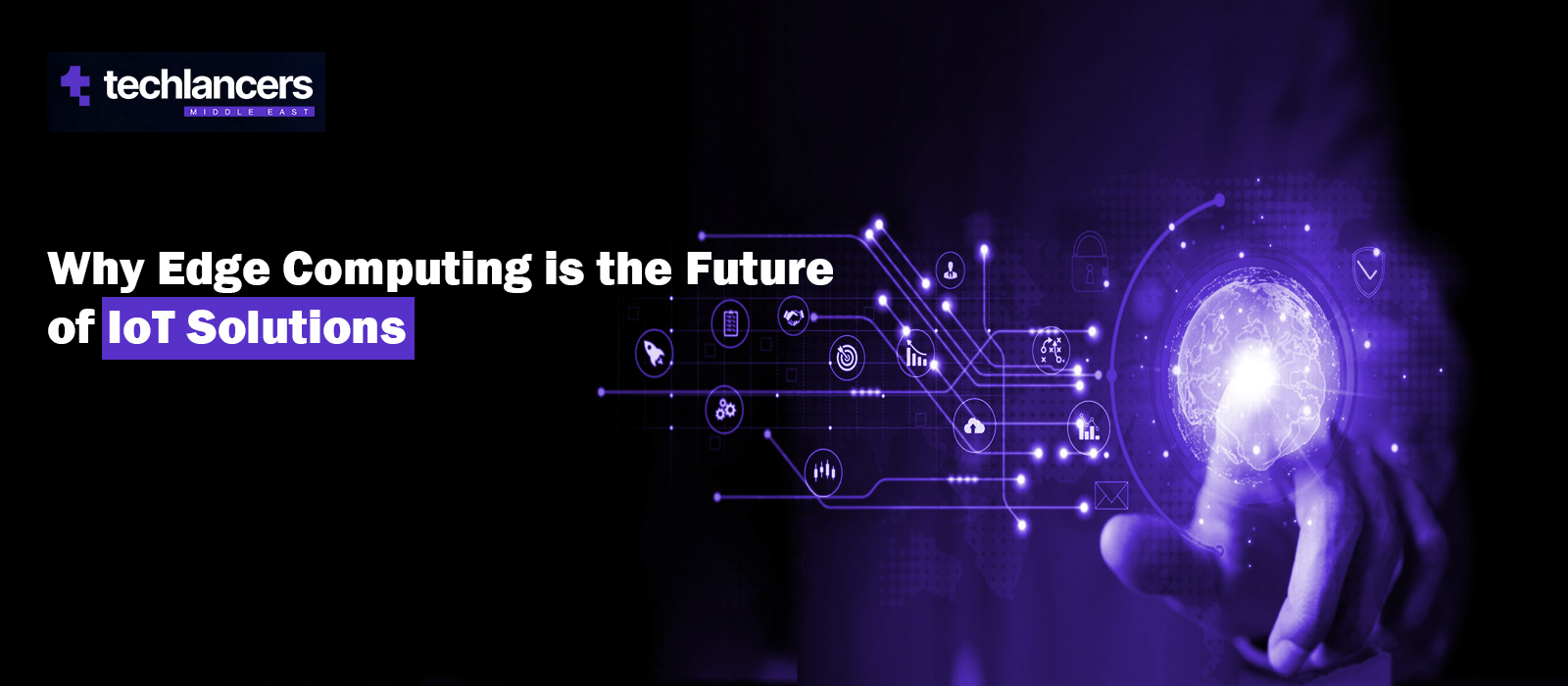Why Edge Computing is the Future of IoT Solutions

IoT keeps on innovating and shaping the spaces of today’s rapidly evolving technological world. Whether it is a smart home or industrial automation, IoT solutions have become part of the operations of today. Yet as the IoT ecosystems continue to expand exponentially the classic models of cloud computing face massive threats. Edge computing, a game-changing concept, intends to change IoT solutions by tackling issues like latency, bandwidth, and security.
The Rise of Edge Computing
Edge computing simply means processing information closer to where it is gathered instead of wholly depending on centralized cloud servers. In this decentralized model, the computation and data storage are moved out to the “edge” of the network-the devices or IoT devices, local servers, or gateways themselves. This way, the amount of distance that needs to be covered for the data reduces, hence response times improve, reliability will be improved, and bandwidth usage reduces.
As IoT networks begin to get complex, demand for edge computing skyrocketed. With billions of connected devices creating zettabytes of data each year, the traditional cloud model continues to falter about scaling effectively and for a mobile app development company in dubai. Edge computing is such an offering that is coming forth almost as a natural fulfillment of meeting IoT’s scalability and efficiency needs.
Key Advantages of Edge Computing in IoT
- Reduced Latency
IoT applications, such as autonomous vehicles, industrial automation, and healthcare, depend on the difference between success and failure; this is achieved by milliseconds. Edge computing can process data locally to enable near-instant responses, which makes it critical for real-time decision-making and for smooth running of time-sensitive operations of IoT.
- Optimized Bandwidth Usage
IoT devices generate enormous amounts of data, most of which does not have to be transmitted to the cloud for processing. Edge computing will filter and process relevant data at the edge while sending actionable insights or critical information to the cloud. This reduces bandwidth consumption and the cost of transmitting data.
- Increased Security and Privacy
The edge computing system keeps data closer to its source, which reduces the chance of interception while transmitting. Thus, sensitive information can be processed locally without exposure to possible vulnerabilities in transit. Localized processing aligns with strict data privacy regulations and improves the overall security posture of IoT solutions.
- More Reliability
The benefit associated with edge computing is that even if the network collapses, IoT systems remain functional. Device capability for the performance of local processing further makes it possible for the maintenance of critical operation, even in environments that are strongly disconnected-locations. This puts its value into especially important perspectives in such space and in missions.
- Scalability for Growing IoT Networks
As IoT ecosystems continue to expand, the data entering the cloud-based infrastructure starts causing obstacles. Edge computing relieves processing pressure by moving tasks onto local nodes and thereby allows for scalability and efficiency without the strain of overwhelming central resources.
Practical Uses of Edge Computing in IoT
Edge computing is already the push behind innovation across many different types of industries.
Health: Edge-capable wearable devices track patient vital signs in real time, ensuring immediate interventions that decrease reliance on cloud-based analysis.
Manufacturing: The smart factory analyses sensor data at the edge on production lines to identify anomalies and avoid equipment failure.
Retail: IoT devices powered at the edge are used to enable personalized shopping by processing customer data locally and delivering real-time insights.
Transportation: Autonomous cars have to run processing from cameras, sensors, and LIDAR in real-time over the edge in order to steer safely.
The Bottom Line
It’s more than just a technological trend; it is the future of IoT solutions. Edge computing helps overcome the weaknesses of traditional cloud models, which opens up possibilities for real-time processing, better security, and scalability. Industries embracing IoT-driven transformation can no longer afford not to adopt edge computing as the only way to keep ahead in this data-driven world.
For a top staff augmentation company in dubai businesses ensures they have skilled professionals and Organizations seeking to tap into the full power of the Internet of Things must embrace edge computing as a pillar of their strategy. In so doing, they will be able to deliver faster, more reliable, and secure solutions that revolutionize operational efficiency and inject innovation. It’s not just shaping the future; it’s enabling it.

-
Posted By – Saba Sohail
Saba Sohail is a business analyst for client-side software solutions. She has extensive expereince in mobile app development strategy, technology stack, software development cost optimization, cloud computing, product scaling and SaaS monetization.

 Consulting
Consulting Development
Development Growth
Growth

